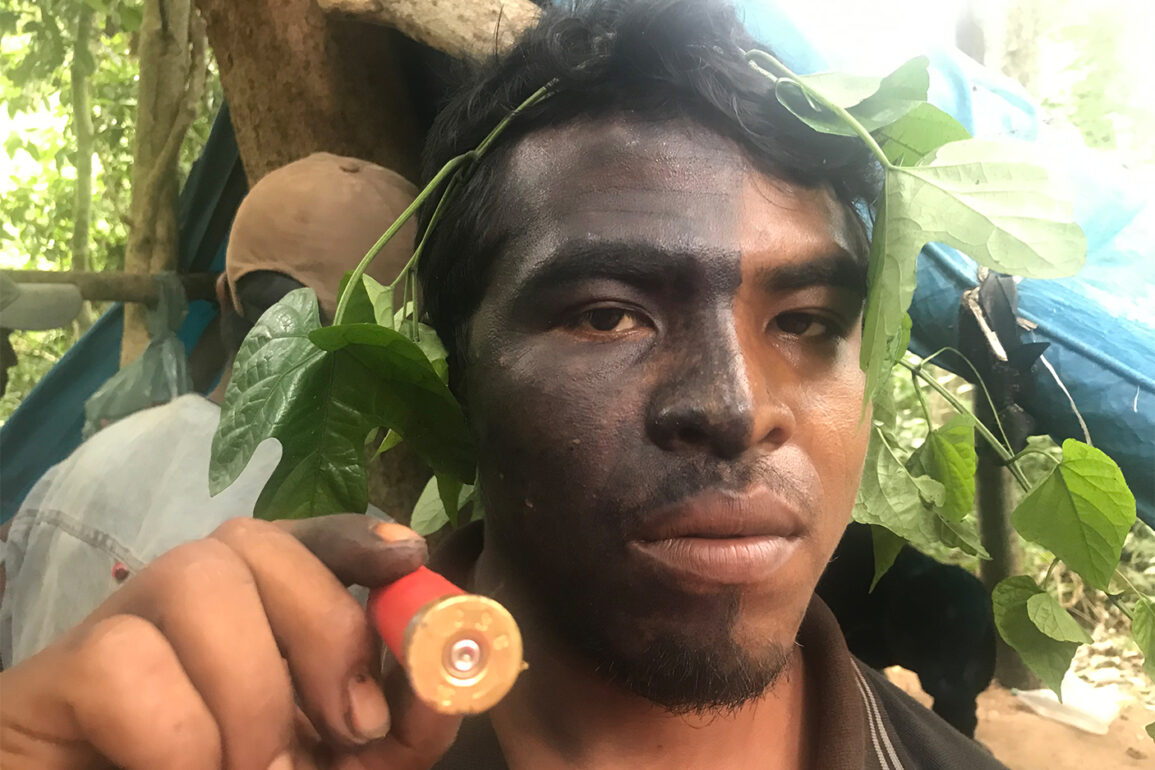- Indigenous forest guardian Paulo Paulino Guajajara was killed in November 2019 in an alleged ambush by illegal loggers in the Arariboia Indigenous Territory in Brazil’s Maranhão state.
- Mongabay’s Karla Mendes, who interviewed Paulo for a documentary film nine months before his death, returned to Arariboia in August 2023 to talk with his family and the other guardian who survived the attack, Laércio Guajajara, and shine a light on a case that still hasn’t gone to trial after four years.
- “If those invaders had managed to kill us both, me and Paulo, they were going to hide us in the forest. Who would find us? Nobody was ever going to find me or Paulo again in a forest of that size,” Laércio says of his will to warn the guardians about Paulo’s murder, even as he suffered four gunshot wounds.
- Justice may soon be on the horizon for the Guajajara people: Paulo’s case will be the first killing of an Indigenous defender that will go before a federal jury, likely in the first half of 2024, after a court in late October denied a motion by those accused to try the case in state court.
This story was supported by the Pulitzer Center’s Rainforest Investigations Network where Karla Mendes is a fellow.
ARARIBOIA INDIGENOUS TERRITORY, Brazil — “I still remember it a lot. Every day. I’ve never forgotten what happened there,” says Laércio Guajajara. “When I looked at my side, I’ll never forget it. My companion was already on the ground. I don’t think he even had time to fire a single shot … That’s why we consider it an ambush indeed.”
Laércio was a witness to, and survivor of, the killing of fellow Indigenous forest guardian Paulo Paulino Guajajara — an attack that took place four years ago this month in their ancestral land in Brazil’s northeastern Maranhão state. None of the alleged perpetrators, suspected illegal loggers encroaching in the Arariboia Indigenous Territory, have yet stood trial for the killing of the 26-year-old.
“There was a lot of shooting. Five firearms against one,” Laércio tells Mongabay. He was shot four times, but during a lull in the shooting he managed to flee, running some 11 kilometers, or nearly 7 miles. “I was so thirsty that I wanted to eat dirt. There were times when I would fall to the ground, it was very difficult to get up again. The blood coming out like a tap,” Laércio says.
“I was thinking along the way, ‘I have to get to the village alive,’ because I thought I was going to [die] too. Because I thought, ‘If those invaders had managed to kill us both, me and Paulo, they were going to hide us in the forest. Who would find us? Nobody was ever going to find me or Paulo again in a forest of that size.’”
Laércio says he doesn’t know how he survived: “It’s really Tupã [God] who saved me; I don’t even know how that happened. Our almighty God who didn’t want it to be my day. It’s a sign that I have to fight to the end.”
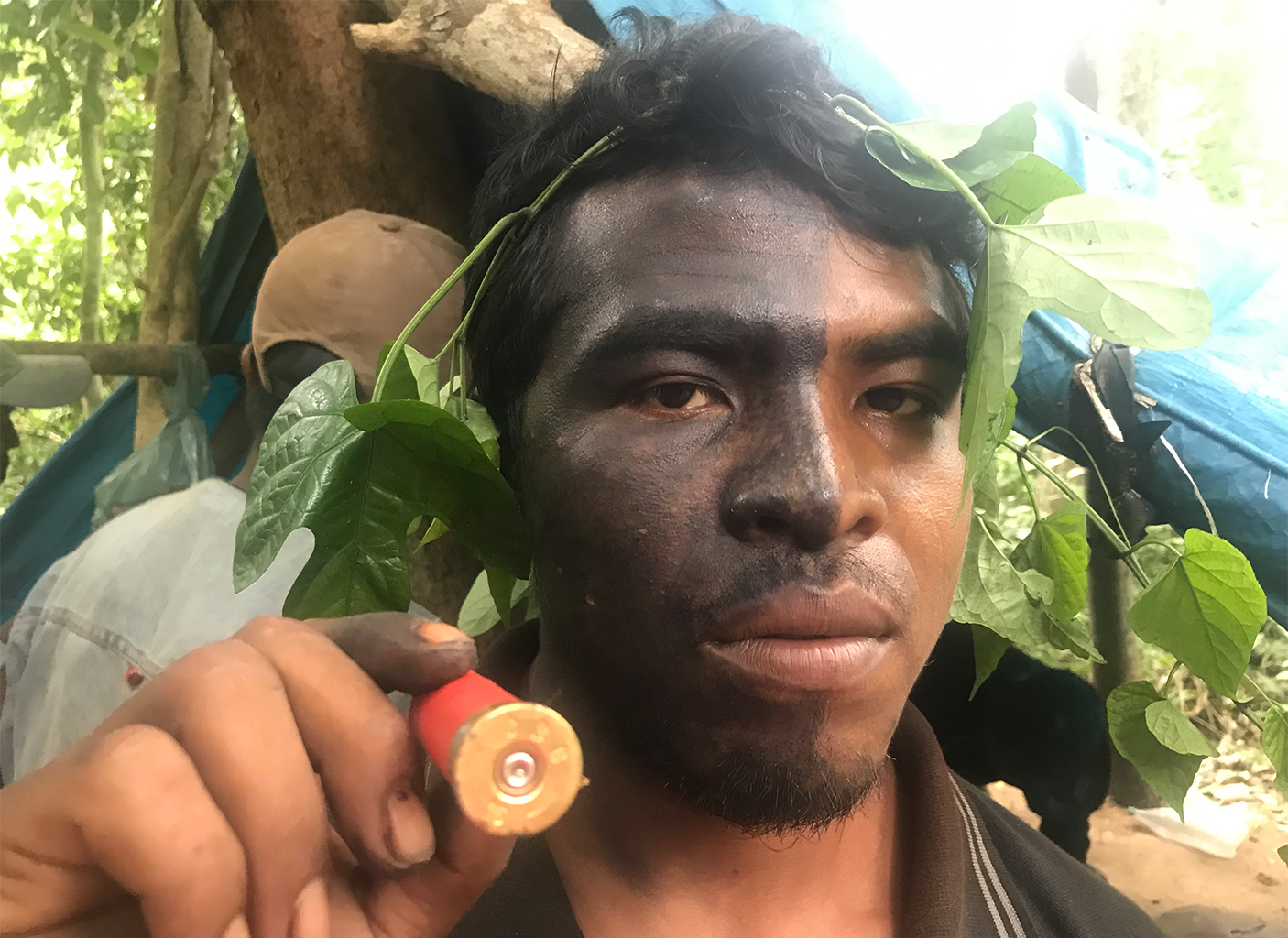
Nine months before Paulo’s murder, my colleague Max Baring and I had interviewed and followed him and Laércio on patrol, filming for a documentary as the forest guardians destroyed illegal logging camps. The “Guardians of the Forest” are a group of Indigenous Guajajara in the Arariboia Indigenous Territory who go to the frontline and risk their lives to protect their ancestral land against illegal logging, hunting and other environmental crimes. The group, formed a decade ago, also protects the Awá people, hunter-gatherers who live in voluntary isolation in the depths of Arariboia’s forests and are considered the most threatened Indigenous group on the planet.
In an interview that now seems prophetic, Paulo foreshadowed his death: “There’s a white man in the village who has sworn to kill me. Right now it’s not even a month since he came after me to kill me because I defend the forest … He’s a gunman hired by a logger.”
Paulo also showed us an ambush site set up by loggers: “This is a trap that the loggers built here. While some [loggers] are splitting logs, the other is watching here with a firearm,” he told us for the documentary we shot for the Thomson Reuters Foundation, whose news platform is called Context since September 2022. “So when the guardian passes by, [he] shoots. Some shootings have already happened.”
In August 2023, I returned back to Arariboia to talk with Laércio and with Paulo’s family to once again shine a light on a killing that still hasn’t gone to trial after four years.
In a video interview on the Buriticupu River, Laércio gets emotional remembering his last moments with Paulo on that fateful day, Nov. 1, 2019. “We had already agreed, ‘Warrior, let’s go hunting in the region where the Awá are, let’s go.’” It wasn’t a patrol; they’d gone for fun, Laércio says. But then the tragedy they didn’t expect happened. And it started with their discovery of motorbikes left by loggers, who were scouting trees to fell.
Laércio says he and Paulo vandalized the bikes and were preparing to take one of them to send to Funai, Brazil’s Indigenous affairs agency, to trace its owner through the license plate. “Because as guardians, we have to show the crime, prove the location.”
But as they were about to leave, getting water from a well, Laércio says, the loggers, who were hunting in the area, suddenly arrived and announced that they had the guardians surrounded. “When I looked behind the tree, the hunter was already coming with his rifle and shot,” Laércio says. “I realized that my companion was already dead. I looked into his eyes and it was different. Very yellow, right, inside.”
Laércio falls silent at the recollection, remaining that way for several minutes, visibly emotional.

Paulo’s father, José Maria Paulino Guajajara, tells of how “desperate” he was when he received the news about the tragedy. But at the same time he wanted to go to the area. In the end, it was he who identified Paulo’s body.
“I went there alone, accompanying the policemen. Then, when I got there, I saw my son, near the well … All bruised,” José Maria tells Mongabay at his village. “They hurt him a lot. His head was all bruised. Only myself and God, who was with me, knew that pain, which I still feel today.”
The killing occurred in a very remote area, which made it difficult to take Paulo’s body out of there, José Maria says. They first tried slinging him on a hammock, but he was too heavy, so they put him on a donkey. “I put my son across the donkey. Then my son came spilling blood [until] we arrived here,” he says in tears. “We buried him there. The next day, the guys came again, pulled him out, took him to the forensics. A lot of emotion and sadness. I didn’t expect something like this to happen to my son.”
Four years on, Laércio, José Maria and all the Guardians of the Forest say they feel outraged at the impunity over Paulo’s killing, as well as the deaths of all the other guardians and Guajajara people killed in their fight to protect Arariboia.
“[The authorities] know who killed my son. They don’t arrest them because they don’t want to. I don’t know if they have money,” José Maria says. “We Indigenous are dying.
There’s no justice. I’ve never seen a white man who killed an Indigenous [person] imprisoned. Never. Because my mother was killed by a logger. My brother-in-law was killed by a logger, his name was Santino. And now it was my son.”
Closer to be a landmark case
In the past 20 years, more than 53 Guajajara individuals have been killed in Maranhão state, with none of the perpetrators ever being tried, according to the Indigenist Missionary Council (CIMI), an advocacy group affiliated with the Catholic Church. Of this total, 24 were killed in Arariboia, according to data from CIMI; six were guardians, the Guajajara people say.
Two suspects have been indicted for the murder of Paulo and attempted murder of Laércio. Antônio Wesly Nascimento Coelho and Raimundo Nonato Ferreira de Sousa have claimed in their defense that they were just hunting game in Arariboia to feed their families and that it was the two guardians who attacked them first.
Nevertheless, the pair will stand trial, eventually. The case is expected to be a legal landmark as the first killing of an Indigenous land defender to go before a federal jury. It has been escalated to that level because prosecutors say the attack represented an aggression against the entire Guajajara community and Indigenous culture.
“It is symbolic and says a lot about the murder that took place when the Indigenous [people] realized that there were invaders, unauthorized people inside the [Indigenous] land,” federal prosecutor Alfredo Falcão tells Mongabay. He adds the site where the killing took place was very remote and only those who knew the area could get to it. “This makes it very clear — and this helped the investigation to be concluded — in the sense that this murder wasn’t just a fight between private individuals, but between the Indigenous community and people who were using their land without authorization.”
I spoke with Falcão in late September at his office in Recife, capital of the northeastern state of Pernambuco. The case has landed there because Falcão is one of the very few prosecutors in Brazil with expertise trying a case before a federal jury.
I had messaged Laércio while on my way to interview Falcão, telling him: “I’m going to talk to the prosecutor. Do you want to send a message?” He replied: “I’d like you to ask him when the trial will be.”
“As soon as possible,” is Falcão’s response. He adds that the court will be counting on Laércio’s testimony. “He’s the eyewitness to that moment. At the same time, his testimony is essential so that the community’s hope is not lost from now on,” he says. “I was very moved to hear that Laércio survived [and] tried to warn the community about the risk they were taking. That shows a certain generosity, and, why not say it? The great way in which he plays this role of land defender, of a guardian. And only after [warning the community] he went to take care of his body at the hospital. And after all this, I now have the news that he has returned to his role as an Indigenous leader. So, I want to give him this answer about the date of the jury, which will take place as soon as possible.”
Falcão also sent a message to Paulo’s family and the Guajajara people to trust that the state can give them an answer to their pleas for justice. “Life is the most precious thing you have. And the court can’t give it back. But it can deprive those who have destroyed life of their liberty,” he says. “And it can [also] reaffirm in other areas this beautiful Indigenous culture and the representativeness of all the work of the Guardians of the Forest that Paulo and Laércio represent.”
Falcão says he’s hopeful the trial will take place in the first half of 2024, and confident of a conviction. “That’s what I have to say to Paulo Guajajara’s family: to say that the dream is worthwhile and must continue.”

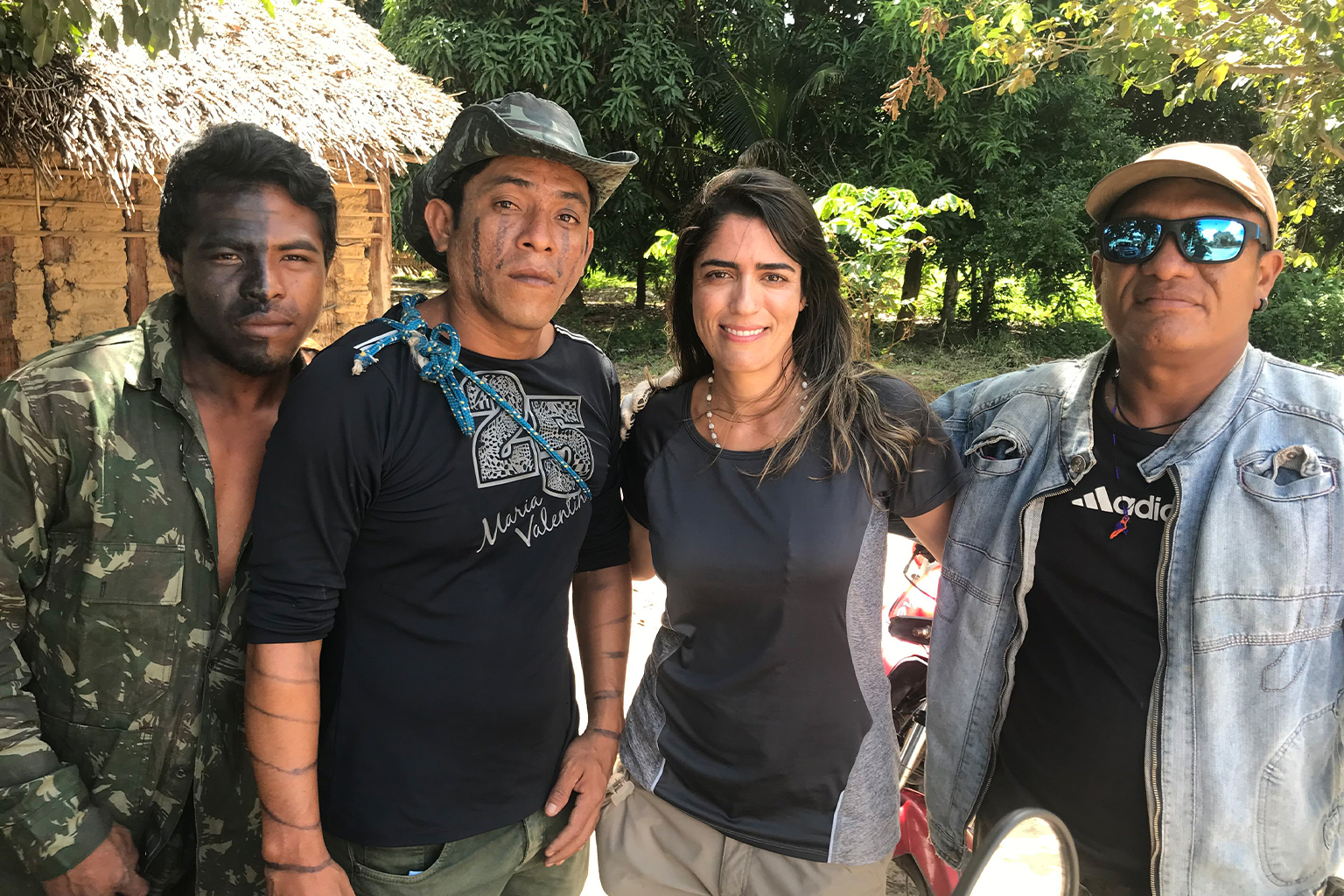
Following the indictment, in March 2022, the legal process was stalled for almost two years as one of the defendants, Sousa, appealed to have the case heard by a state court by arguing that it was a private quarrel. Then, in late October this year, the Federal Circuit Court for the First Region (TRF-1) in Brasília denied the appeal, setting the stage for the killing to finally go to trial.
“The thesis that the Indigenous leaders Paulo Paulino Guajajara and Laércio Guajajara would have attacked [the defendants] first is absurd, with all due respect,” says federal prosecutor José Robalinho Cavalcanti, who led the oral arguments before TRF-1. “Because the others chased them with guns. And the reports prove that Paulo Paulino was killed by a long-distance shot, from a hunting rifle. And that’s what the people who are being accused had in their hands because they were hunting irregularly there.”
Cavalcanti adds that the judge who initially ordered that the case go before a federal jury “had already made that analysis [and] the court has now corroborated it: it was a question of defending cultural heritage and the forest and, therefore, something essential to the life and culture of the Indigenous people. The action of the Guardians of the Forests was recognized twice by the courts.”
He says the vigilante actions of the guardians, aimed at defending the Indigenous way of life, is “a form of reaction” to the attacks on their land, given the lack of protection from the Brazilian government. “They were there not in a private capacity, but as Guardians of the Forest. They were defending the forest and that’s why there was a confrontation and they were killed,” Cavalcanti tells Mongabay in an online video interview. “This recognition is of fundamental importance and it brings the case to the jurisdiction of the federal court.”
The appeal to TRF-1 was filed by the Federal Public Defender’s Office (DPU), representing Sousa. If it doesn’t appeal to a higher court, scheduling the trial will depend only on an anthropological report of the damages to the Indigenous community as a result of the crimes.
In an emailed response on Nov. 13, the DPU told Mongabay it won’t appeal the TRF-1 decision. “An analysis of the situation indicates that reviewing the court’s understanding would require reexamining factual and probative matters, which is not possible in a special appeal, according to the case law of the Superior Court of Justice.” The lawyer representing Coelho didn’t respond to Mongabay’s request for comment.
An appeal wouldn’t have succeeded anyway, says Cavalcanti, given that the ruling by TRF-1 is solid and confirmed all the evidence from the indictment. “There’s nothing more to do from the point of view of discussing the evidence. Now, let’s go to the jury, which is sovereign,” he says. The DPU’s technical arguments were well done, he adds, but they lost because “the truth wasn’t on their side.”
“It is the jury that will say that the evidence is sufficient,” Cavalcanti says. “The body of evidence is extremely solid and justice will be made for Paulo Paulino Guajajara and for the Guardians of the Forest’s struggle.”
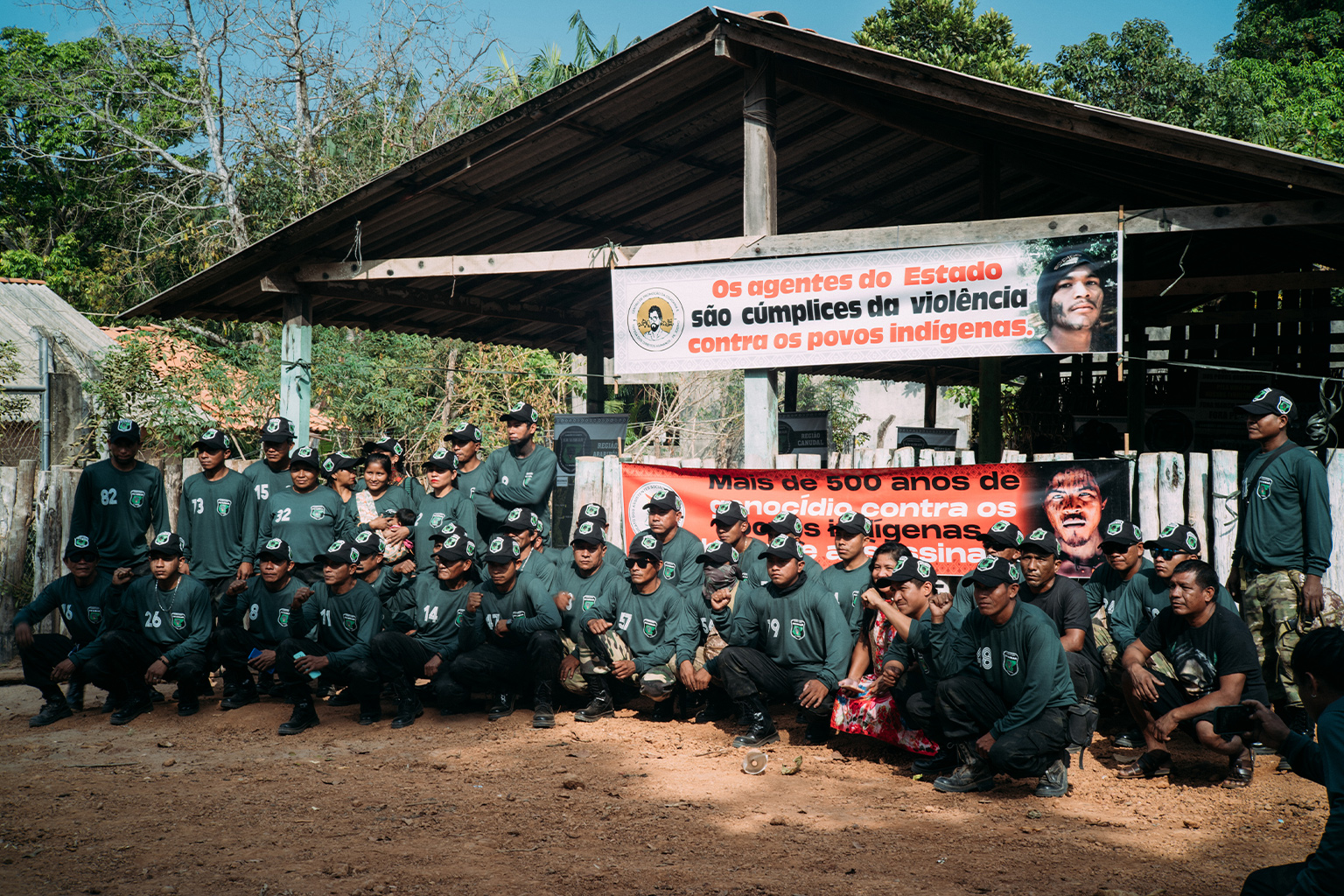
Centuries-long struggle
Unlike the Awá, the Guajajara of Maranhão have been in contact with outside society since 1615, their first recorded encounter with Portuguese colonizers. Over the centuries, they’ve been subjected to forced proselytization by missionaries, slavery, infectious diseases, persecution, conflict, and extreme droughts that devastated the land. A branch of the Tupi-Guarani family, they called themselves Tenetehara but in the migration process came to be called the Guajajara in Maranhão; those who went to Pará are today called the Tembé. This contact with outsiders over centuries has been marked by several massacres of the Guajajara and devastation of their land.
The Arariboia territory has been fully demarcated since 1990, which means it’s officially recognized as an Indigenous territory by the federal government and is protected against the incursion of outsiders. Yet crimes like illegal logging and poaching regularly occur here. Satellite imagery shows Arariboia as an island of green surrounded by a sea of deforestation.
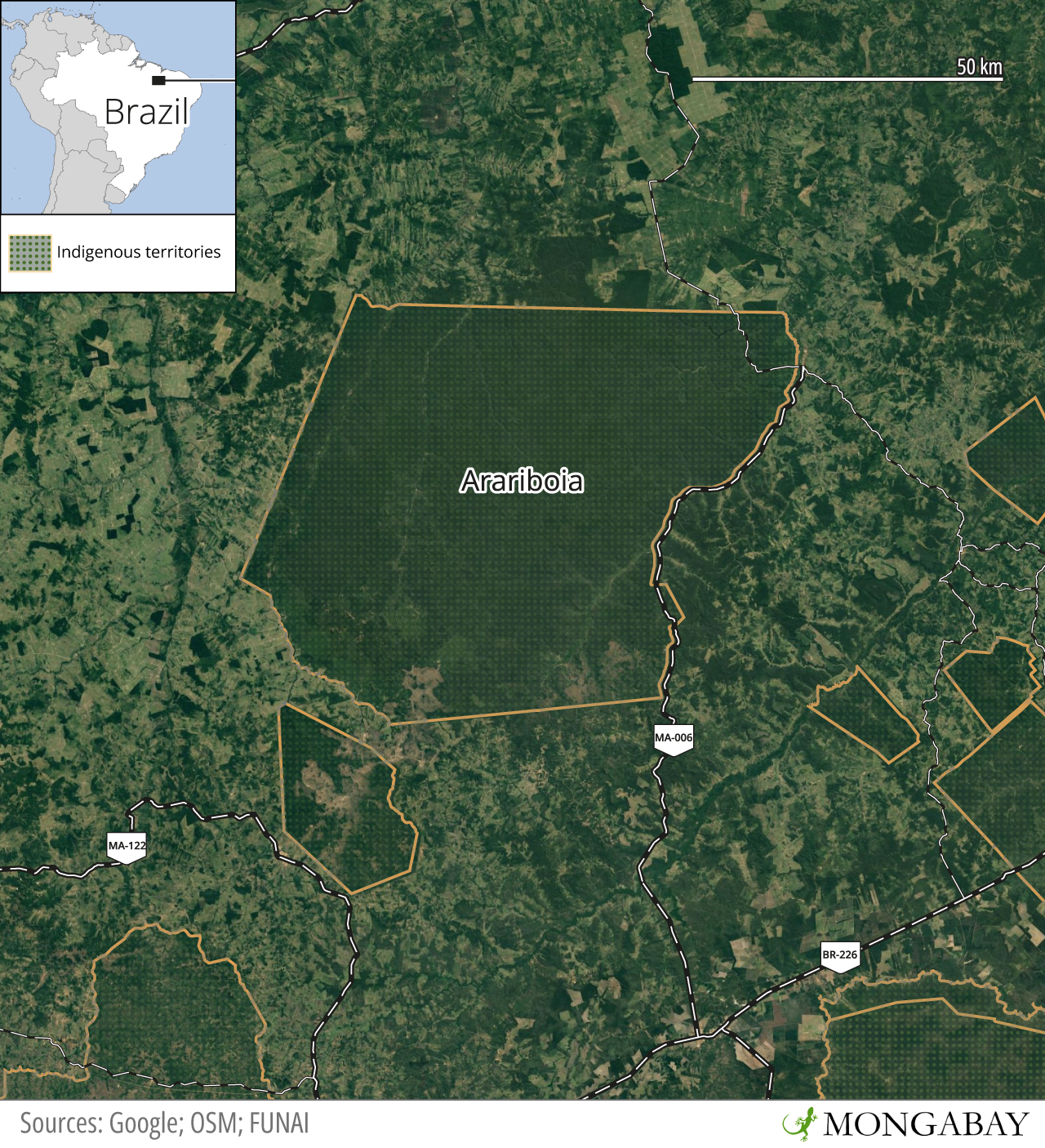
Between 2020 and 2022, Arariboia lost 948 hectares (2,340 acres) of tree cover, according to Instituto Socioambiental (ISA), a nonprofit that advocates for the rights of Indigenous and traditional peoples. At the same time, violence by outsiders against the Indigenous inhabitants keeps escalating. A spate of killings allegedly linked to land disputes left four people dead and two injured in the space of just 10 days in September last year.
“This trial will be a watershed for the accountability of people who murder Indigenous people,” Gabriel Mateus Serra, a lawyer with CIMI, which is serving as a prosecutorial assistant in the upcoming trial, tells Mongabay after a Guardians event in Arariboia. “It’s a watershed for Brazil because after the formation of the Guardians here in the Arariboia Indigenous Territory, several other Indigenous territories began to form in similar ways [in response to] the non-Indigenous murdering the Indigenous [and] the state remaining inert, sluggish.”
Serra says there must be punishment to put an end not only to the culture of killing, but also to environmental crimes in Indigenous territories. “When the justice system doesn’t give a return, a condemnatory sentence, an answer to society for this, those who carry out these criminal actions frequently feel unpunished and persevere in these types of actions, like illegal hunting, deforestation, removal of wood [to make fence posts]. It’s the same group.”
A prominent case of impunity in Arariboia dates back to 2007, when Indigenous chief Tomé Guajajara was killed by illegal loggers at his home, says Lucimar Carvalho, a former lawyer with CIMI who served as a prosecutors’ assistant for Paulo’s case until last year and now with the guardians, serving as a prosecutors’ assistant in Tomé’s case. “This case moves the guardians a lot,” she tells me in Arariboia. Although the guardians didn’t yet formally exist at the time, she says, Guajajara leaders were already acting against illegal logging in their territory. “One of the actions that began in 2007 was that of Tomé, the group from the Lagoa Comprida [region], to react against the loggers. And the loggers’ reaction against the Indigenous people was cruel.”
The prosecution almost failed to meet the statute of limitations in Tomé’s case, Carvalho says, due to “clear omission” by the government, especially Funai, in not presenting the Indigenous witnesses to testify at the hearings. But thanks to the persistence of the guardians and CIMI, Carvalho says, they were finally heard by the judge in March 2023 and the case remains ongoing.
Funai didn’t respond to Mongabay’s request for comment.
The guardians also ensured justice for Janildo Guajajara, a guardian killed in September 2022. His photo adorns a banner in the village that reads: “State agents are complicit in the violence against Indigenous peoples.” Authorities only exhumed his body for a forensic examination this past July, Carvalho says.
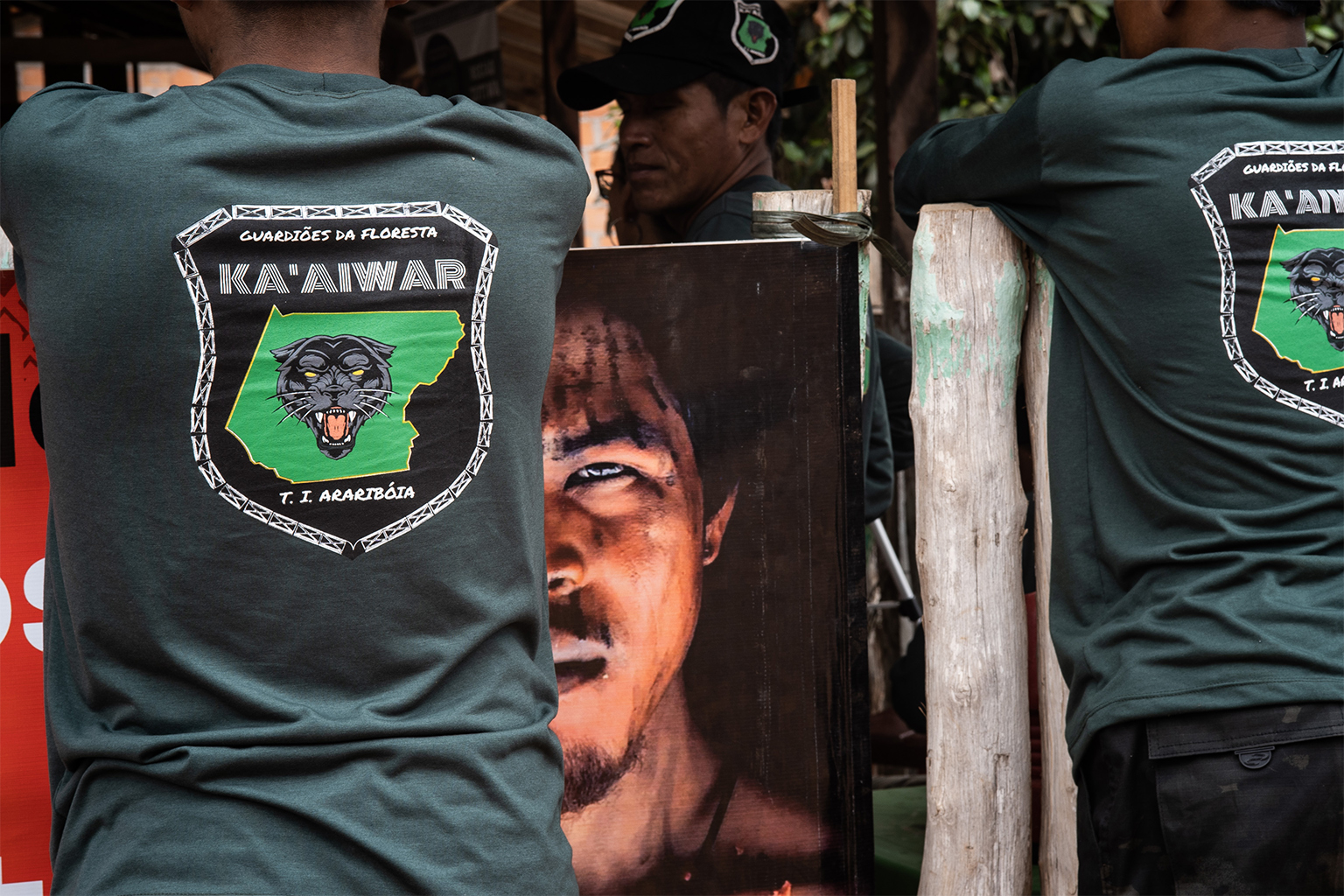
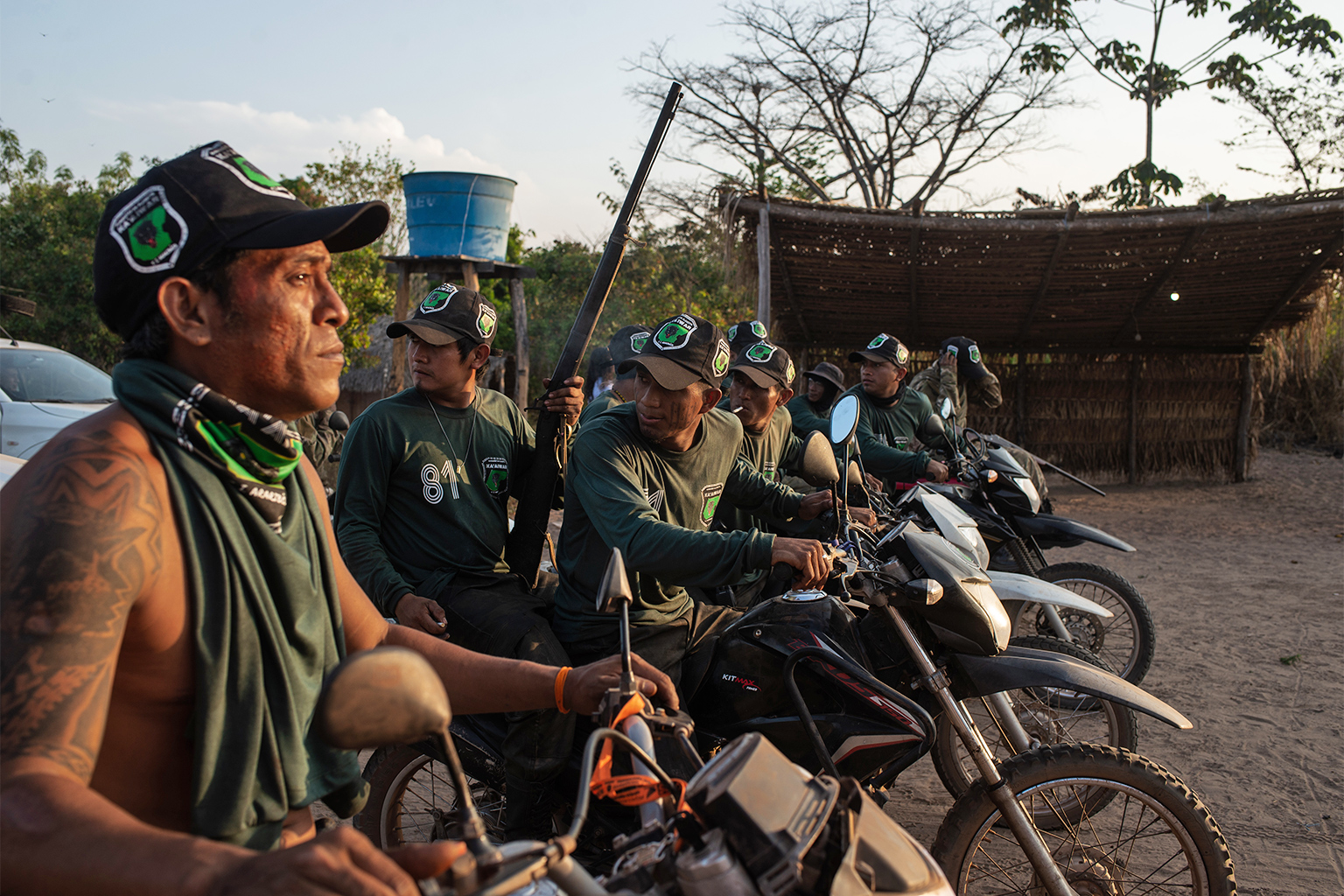
Tribute to Paulo, endless fight despite threats
Paulo’s killing has become the symbol of the guardians’ fight to protect Arariboia. During my weeklong stay in Arariboia in late August and early September — when I follow the guardians on their training, on patrol, and at public events with community members, federal government representatives, academics and NGOs — Paulo is constantly evoked by the Guardians. His photo lights up a banner with a message: “More than 500 years of genocide against Indigenous peoples. No more murders!”
His banner is also in focus in the village during the screening of the documentary film I co-directed with Baring, followed by an epilogue with Paulo’s interview, which wasn’t part of the original film. The guardians give a resounding applause when Paulo speaks of how dangerous their work is and how the guardians suffer from the lack of Justice and support: “We feel very alone here, with no help. We need help and a lot of support here on this land.”
They also applaud for Indigenous rights defender Bruno Pereira — who was also featured in the documentary — and British journalist Dom Phillips; Pereira and Phillips were killed in the Vale do Javari region of Amazonas state in June 2022.
Pereira talked to me and Baring in Brasília in early 2019, as the head of isolated Indigenous groups at Funai, despite restrictions from the government of president Jair Bolsonaro prohibiting Funai’s officials from talking to the press. “It’s an extremely violent region,” he spoke in the video about the risks the guardians faced defending their land. “The land continues to be devasted. We have satellite imagery showing how much timber has been taken from these lands and it’s absurd there isn’t a proper response to this situation. The government is really failing there.” Dom did a great story about the guardians in 2015, and I remember him congratulating me about the documentary film, which won four international awards.
Most of the guardians tell me they’ve never seen this interview with Paulo before, and several say they hadn’t even watched the documentary. Having seen it now, they say, they’re both very pleased and emotional — and also outraged by the injustice of it all.
Other guardians tell me it’s very important to watch it again with the whole group. “It was very gratifying for me to see him [Paulo] here, even if only on video. But of course he is always with us, in our hearts,” says Laércio, who’s taking photos of the screening and wearing a shirt that reads, “Indigenous blood: Not a drop more!”
“It was very nice to see him again during the time we walked together, and shared all the suffering together,” he says. “I was happy and sad at the same time. We’ll never know … if we’ll be alive at the end of tomorrow. Thank you so much for keeping these memories of our guardians!”
Edivania Guajajara, one of the female guardians, echoes Laércio’s sentiments. “We will never forget him [Paulo]. We miss him among us. But he’s always with us.” Edivania was also featured in the 2019 documentary, where she told us how worried she was each time her husband, Julio Guajajara, went on patrol.
She describes the last time she saw Paulo at her village, just hours before his death. “They got there at almost noon, he and Laércio. I made lunch for them there. Paulo Paulino, he’d never talked to me [before], never. Then, when that time came, he talked to me a lot,” Edivania says, visibly emotional. “He’s my relative too, he’s my cousin. He talked like that: ‘We’re here, we’ve come for another walk. While we’re still living on this earth, we go to the villages to visit our relatives. So, the day we’re no longer there, it’s going to be difficult to see each other.’” For her, “he went to say goodbye to us.”
Teresa Guajajara, a female guardian who lives in the same village as Edivania, says “it seemed like everything was over for us” the day Paulo was killed. “We were scared, very sad. They said a lot of things, that loggers were coming to attack us too, to kill us.”
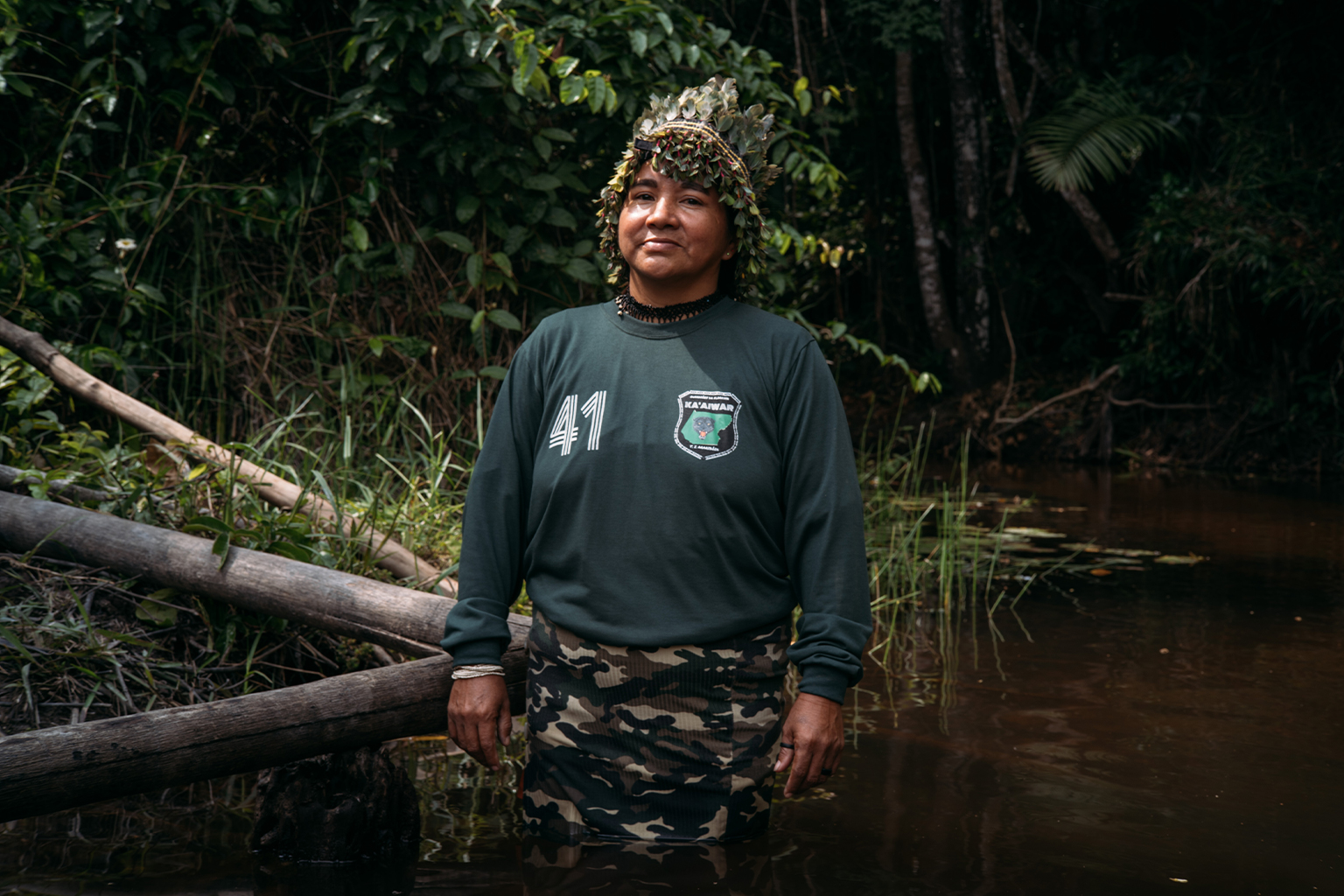

Like Paulo, many of the guardians tell me they face constant death threats. Following Paulo’s killing, some were placed in the Maranhão state’s protection program. But they asked to leave shortly after, given that it required them to leave Arariboia — something they would never do, despite the constant threats.
Among them is Olímpio Iwyramu Guajajara, who was the guardians’ leader at the time of the 2019 documentary film. “My whole family came up to me asking me to stop,” Olímpio says, crying. He falls silent for some minutes, then continues: “I didn’t answer, I kept quiet. Then, an hour, half an hour later, I told them I wasn’t going to give up, because the blood of a warrior, of protecting life, ran in the veins of my ancestors, especially my great-grandfather.”
Olímpio points out that it wasn’t easy to get Arariboia demarcated. “This land wasn’t demarcated for free. If it hadn’t been for the Tenetehara warriors to defend it, we wouldn’t be here today. Our people would have been finished.”
Now, Olímpio says, he’s become used to the threats. “Last week, one of the brothers of the man who threatened me came to my house and told me to be very careful because otherwise I’d be knocked down.”
But the cost is high, he says. “I lost the freedom to take part in traditional celebrations. I lost the freedom to walk, to come alone from my shack over here,” says Olímpio, who is now the president of the Ka’aiwar Indigenous Association of Forest Guardians of the Arariboia Indigenous Territory. Ka’aiwar in the Guajajara language means “the people of the forest.”
Laércio left the country for his own safety shortly after Paulo’s murder. But he also quit the protection program and even became the coordinator of the guardians for a year. But he left that position a year ago. “That’s when a lot of threats came out again. ‘Laércio is there again, he’s continuing. His life here will be short.’ [These were] the conversations we heard.”
He still works as a guardian, but no longer in a capacity that leaves him “too exposed,” he says. “Whenever I’m needed, I’ll be helping out our fight here,” he says. “We need to stand up. Even with a lot of persecution.”
Despite all they face, the guardians are unanimous that they will never give up fighting for their ancestral land.
“We can’t destroy our forest, because if we do, then our culture will be destroyed too. That’s why we never stop fighting in the forest. Like my son, Paulo,” says José Maria in tears, remaining silent for a while. “His mother told him to stop fighting [against] invasions. Then he’d say, ‘No, mom, I’m not stealing, I’m not doing anything [illegal]. I’m just protecting our forest here, because we have to preserve the forest for our child, our grandchild, our great-grandchild. So I won’t stop fighting.’”
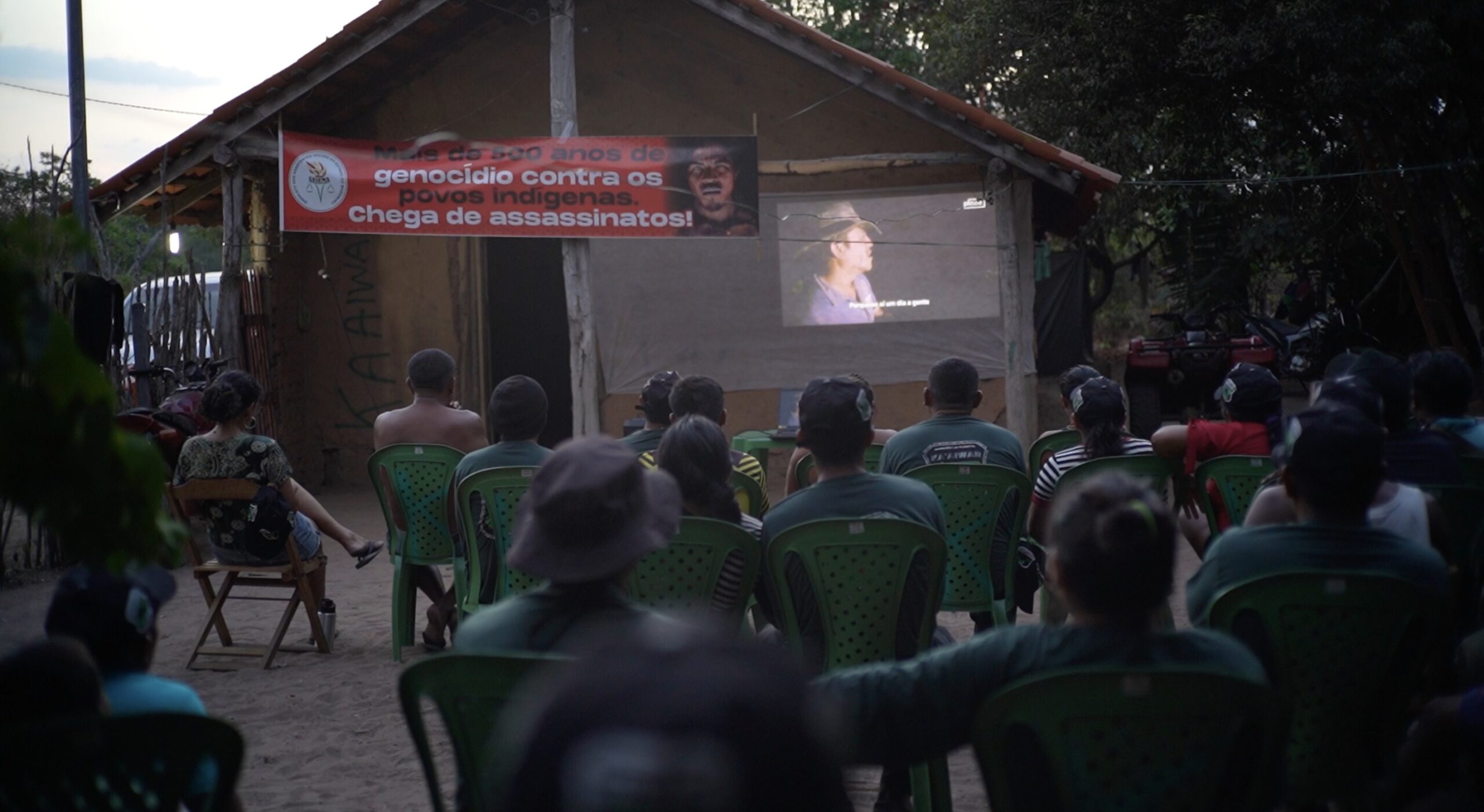
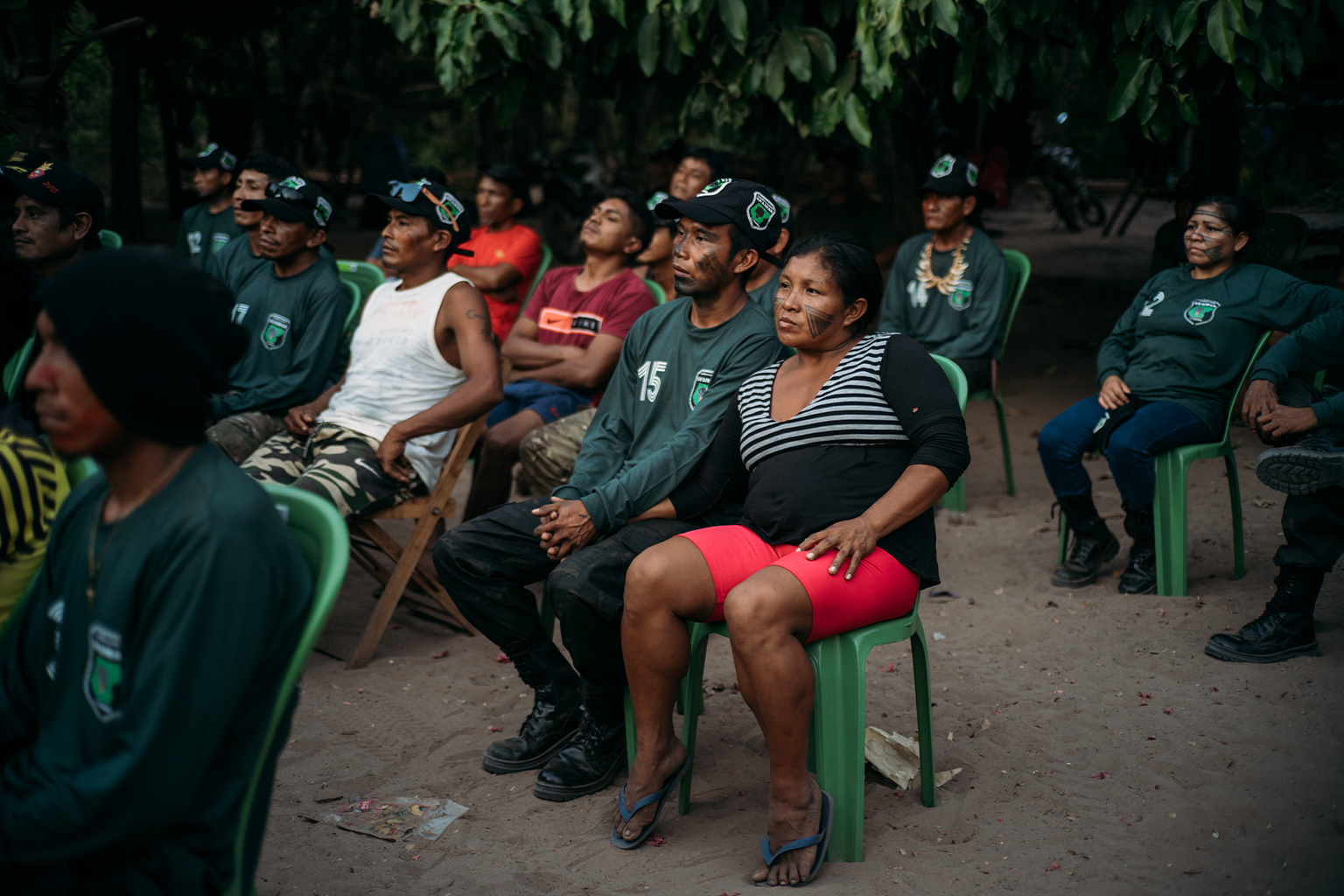
Laércio says he remembers Paulo telling the guardians that they were at war and that death should not be the end. “‘So because now I’m going to die, now Laércio, the boss, the other one, the war is going to end? Just because I died? Negative,’” he quotes Paulo as saying.
“My dream is … Our dream, Lobo’s [Paulo’s] is to see this territory really protected. No more illegal activities, our dream will be fulfilled. When there are no more loggers, no more hunters,” Laércio says. “As long as there is a warrior who has the dream of the others who were left behind, as long as we also have their dream in our heads, we will fight to get there. There are a lot of warriors dreaming what Lobo [Paulo] dreamed, that I dream until today. As long as God doesn’t take [my life] too.”
In the 2019 interview, Paulo speaks of a fellow guardian who was killed. “His name is Afonso. A logger killed him and nothing happened. Nothing, not even justice. He earned a little per diem to support his family. Now he’s dead and his family is suffering there. Not one person has taken any action to help the family that was left behind. He died fighting for this land here, for this land that we are on here today.”
As with much of that interview, his words proved prophetic. Today, it’s José Maria, bereft of a son, who lives in hardship. He’s responsible for raising Paulo’s son, José Paulo Inamé Guajajara, now 6 years old, without the welfare payment the family should have been entitled to. “[The child’s] mother left a year [after Paulo’s murder] and got married there. She kept the boy’s pension. And the boy is there, without anything.”
I reached out repeatedly to the lawyer handling the welfare case, but he didn’t respond to dozens of requests for an interview.
“My dream is to pay tribute to him [Paulo],” José Maria says. He talks of a school he wants to build and name after Paulo. José Maria is a singer and the school will teach the children to sing the Guajajara’s traditional songs to preserve their culture, he says.
In 2019, Paulo proudly showed us a video in which he ate the still-pulsing heart of a turtle — an ancestral ritual meant to protect him and make him stronger. “Our culture is our life. It’s in our blood, and nature is always part of our life.”
Banner image: Forest guardian Laércio Guajajara, right, witnessed the killing of his companion, fellow guardian Paulo Paulino Guajajara, and survived the attack in November 2019 in the Arariboia Indigenous Territory in Maranhão state. Images by Ingrid Barros for Mongabay & Karla Mendes/Mongabay.
The Ka’aiwar Indigenous Association of Forest Guardians of the Arariboia Indigenous Territory welcomes donations to build a school named after Paulo Paulino Guajajara. The association, set up three years after Paulo’s murder, also receives donations for protecting the Arariboia Indigenous Territory.
Karla Mendes is a staff investigative and feature reporter for Mongabay in Brazil and a fellow of the Pulitzer Center’s Rainforest Investigations Network. She is also a board member of the Society of Environmental Journalists (SEJ). Read her stories published on Mongabay here. Find her on 𝕏, Instagram, LinkedIn, Threads and Bluesky.
This story was supported by the Pulitzer Center’s Rainforest Investigations Network where Karla Mendes is a fellow.
Indigenous advocates sense a legal landmark as a guardian’s killing heads to trial
FEEDBACK: Use this form to send a message to the author of this post. If you want to post a public comment, you can do that at the bottom of the page.
This post was originally published on this site be sure to check out more of their content.



